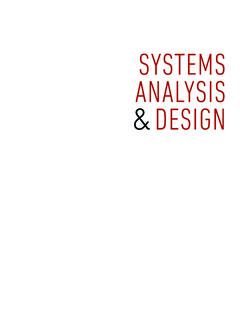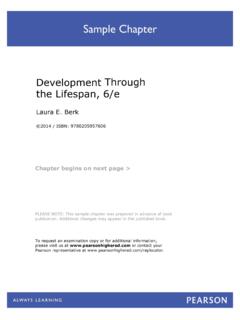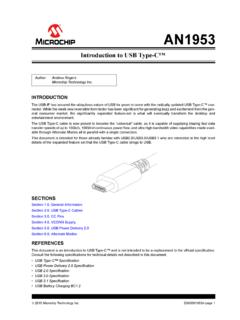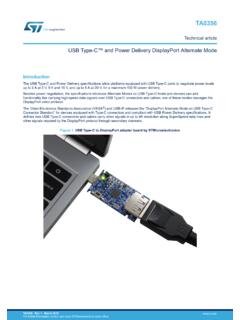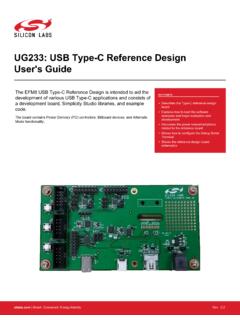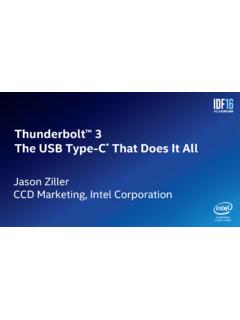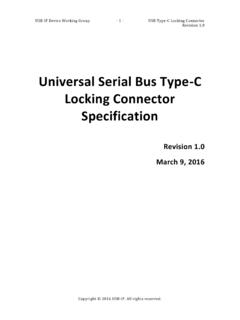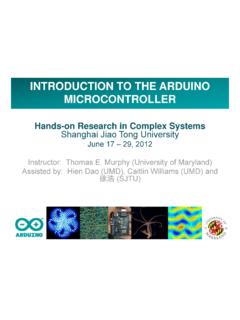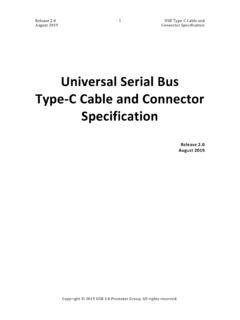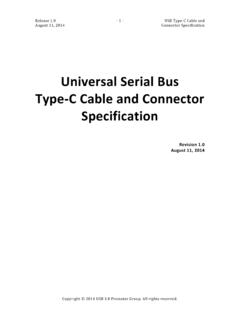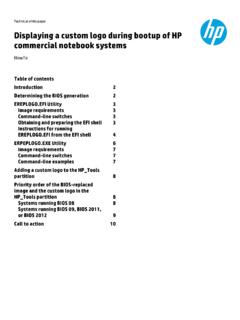Transcription of CHAPTER Introduction to Computers and Programming
1 About some of the different ways that people use Computers . In school, students use com-puters for tasks such as writing papers, searching for articles, sending email, and participating inonline classes. At work, people use Computers to analyze data, make presentations, conduct busi-ness transactions, communicate with customers and coworkers, control machines in manufac-turing facilities, and do many other things. At home, people use Computers for tasks such as pay-ing bills, shopping online, communicating with friends and family, and playing computer don t forget that cell phones, iPods , BlackBerries , car navigation systems, and manyother devices are Computers too. The uses of Computers are almost limitless in our everyday can do such a wide variety of things because they can be programmed. This meansthat Computers are not designed to do just one job, but to do any job that their programs tellthem to do.
2 A programis a set of instructions that a computer follows to perform a task. Forexample, Figure 1-1 shows screens from two commonly used programs, Microsoft Word andAdobe Photoshop. Microsoft Word is a word processing program that allows you to create,edit, and print documents with your computer. Adobe Photoshop is an image editing programthat allows you to work with graphic images, such as photos taken with your digital are commonly referred to as software. Software is essential to a computer becauseit controls everything the computer does. All of the software that we use to make our com-puters useful is created by individuals working as programmers or software developers. Aprogrammer,or software developer,is a person with the training and skills necessary todesign, create, and test computer programs.
3 Computer Programming is an exciting andrewarding career. Today, you will find programmers work used in business, medicine, gov-ernment, law enforcement, agriculture, academics, entertainment, and many other to Computersand and Computers Store a Program 1/30/08 12:55 AM Page 12 CHAPTER 1 Introduction to Computers and ProgrammingThis book introduces you to the fundamental concepts of computer Programming using thePython language. Before we begin exploring those concepts, you need to understand a fewbasic things about Computers and how they work. This CHAPTER will build a solid founda-tion of knowledge that you will continually rely on as you study computer science. First,we will discuss the physical components that Computers are commonly made of. Next, wewill look at how Computers store data and execute programs.
4 Finally, we will get a quickintroduction to the software that you will use to write Python and SoftwareCONCEPT:The physical devices that a computer is made of are referred to as thecomputer s hardware. The programs that run on a computer are referredto as term hardwarerefers to all of the physical devices, or components,that a computer is madeof. A computer is not one single device, but a system of devices that all work together. Like thedifferent instruments in a symphony orchestra, each device in a computer plays its own you have ever shopped for a computer, you ve probably seen sales literature listing com-ponents such as microprocessors, memory, disk drives, video displays, graphics cards, andso on. Unless you already know a lot about Computers , or at least have a friend that does,understanding what these different components do might be challenging.
5 As shown in Figure 1-2, a typical computer system consists of the following major components: The central processing unit (CPU) Main memory Secondary storage devices Input devices Output devicesFigure 1-1A word processing program and an image editing 1/23/08 5:19 PM Page Hardware and Software3 Let s take a closer look at each of these CPUWhen a computer is performing the tasks that a program tells it to do, we say that the com-puter is runningor executingthe program. The central processing unit,or CPU, is the partof a computer that actually runs programs. The CPU is the most important component ina computer because without it, the computer could not run the earliest Computers , CPUs were huge devices made of electrical and mechanicalcomponents such as vacuum tubes and switches. Figure 1-3 shows such a two women in the photo are working with the historic ENIAC computer.
6 TheENIAC,which is considered by many to be the world s first programmable electroniccomputer, was built in 1945 to calculate artillery ballistic tables for the Army. Thismachine, which was primarily one big CPU, was 8 feet tall, 100 feet long, and weighed30 , CPUs are small chips known as microprocessors. Figure 1-4 shows a photo of a labtechnician holding a modern microprocessor. In addition to being much smaller than theold electromechanical CPUs in early Computers , microprocessors are also much 1-2 Typical components of a computer systemInputDevicesOutputDevicesSecondary Storage DevicesCentral ProcessingUnitMain Memory(RAM) 1/24/08 7:48 AM Page 34 CHAPTER 1 Introduction to Computers and ProgrammingFigure 1-3 The ENIAC computer (courtesy of Army Historic Computer Images)Figure 1-4A lab technician holds a modern microprocessor (photo courtesy of IntelCorporation)Main MemoryYou can think of main memoryas the computer s work area.
7 This is where the computerstores a program while the program is running, as well as the data that the program isworking with. For example, suppose you are using a word processing program to write 1/23/08 5:19 PM Page Hardware and Software5essay for one of your classes. While you do this, both the word processing program and theessay are stored in main memory is commonly known as random-access memory,or RAM. It is called thisbecause the CPU is able to quickly access data stored at any random location in is usually a volatiletype of memory that is used only for temporary storage whilea program is running. When the computer is turned off, the contents of RAM areerased. Inside your computer, RAM is stored in chips, similar to the ones shown in Figure 1-5 Memory chips (photo courtesy of IBM Corporation)Secondary Storage DevicesSecondary storageis a type of memory that can hold data for long periods of time, evenwhen there is no power to the computer.
8 Programs are normally stored in secondarymemory and loaded into main memory as needed. Important data, such as word pro-cessing documents, payroll data, and inventory records, is saved to secondary storageas most common type of secondary storage device is the disk drive. A disk drivestoresdata by magnetically encoding it onto a circular disk. Most Computers have a disk drivemounted inside their case. External disk drives, which connect to one of the computer scommunication ports, are also available. External disk drives can be used to create backupcopies of important data or to move data to another addition to external disk drives, many types of devices have been created for copyingdata, and for moving it to other Computers . For many years floppy disk drives were popu-lar.
9 A floppy disk driverecords data onto a small floppy disk, which can be removed fromthe drive. Floppy disks have many disadvantages, however. They hold only a small amountof data, are slow to access data, and can be unreliable. The use of floppy disk drives hasdeclined dramatically in recent years, in favor of superior devices such as USB drives. USBdrivesare small devices that plug into the computer s USB (universal serial bus) port, 1/23/08 5:19 PM Page 56 CHAPTER 1 Introduction to Computers and Programmingappear to the system as a disk drive. These drives do not actually contain a disk, store data in a special type of memory known as flash memory. USB drives, which arealso known as memory sticksand flash drives,are inexpensive, reliable, and small enoughto be carried in your devices such as the CD(compact disc) and the DVD(digital versatile disc) are alsopopular for data storage.
10 Data is not recorded magnetically on an optical disc, but is encodedas a series of pits on the disc surface. CD and DVD drives use a laser to detect the pits andthus read the encoded data. Optical discs hold large amounts of data, and because recordableCD and DVD drives are now commonplace, they are good mediums for creating backupcopies of DevicesInputis any data the computer collects from people and from other devices. The compo-nent that collects the data and sends it to the computer is called an input device. Commoninput devices are the keyboard, mouse, scanner, microphone, and digital camera. Diskdrives and optical drives can also be considered input devices because programs and dataare retrieved from them and loaded into the computer s DevicesOutputis any data the computer produces for people or for other devices.






